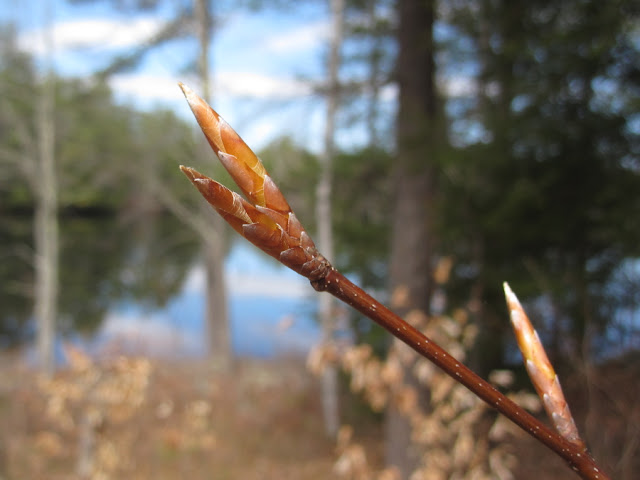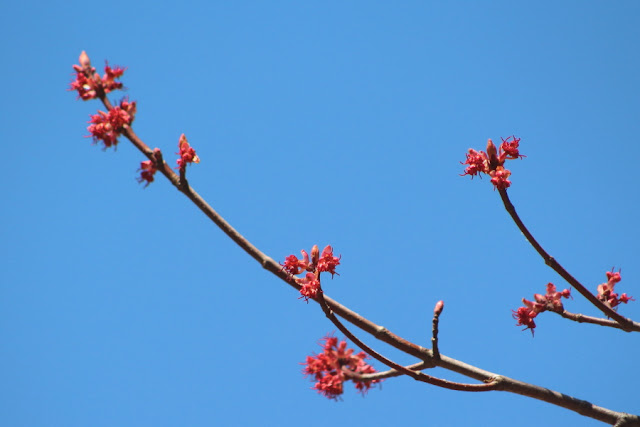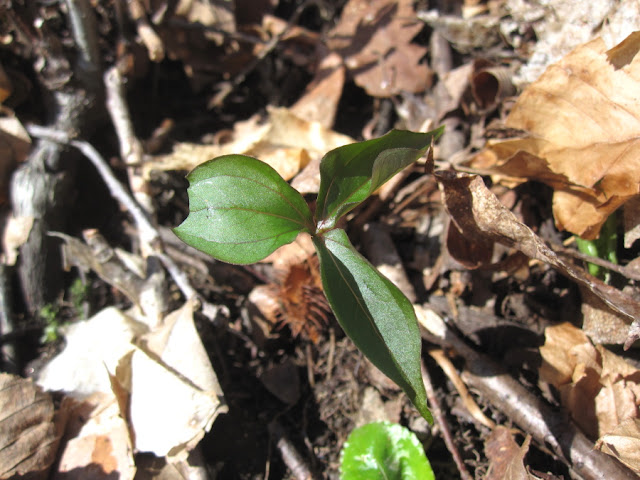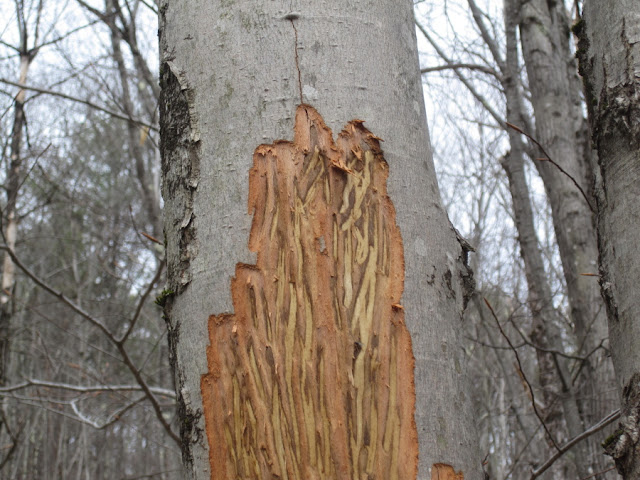It was a good week for ducks. A large assortment of waterfowl is in the Lakes Region right now, some here for the summer, others just stopping in to refuel on their way to breeding grounds farther north or west. One of the more distinguished visitors seems to be present only for a day two each spring before moving on.
 |
| Ring-necked Duck. |
A flock of ring-necked ducks stopped for a rest and some nourishment on their way to Canada or perhaps northern Maine for the summer. There were eight males all congregating around a single female; I wondered whether she was being harassed by them, or whether she liked all the attention.
She certainly had her pick of mates, and didn't seem to have any trouble holding her own against them.
 |
| Whether pursuing or chasing away, she's in control of the situation. |
Where are all the other females?
Ring-necked ducks are divers, but not for fish; they consume mostly plants but also eat animals such as snails, nymphs and leeches. [Ref:
Cornell Lab or Ornithology] I love their sharp mating-season plumage.
Here are a few of the other ducks that stopped by Lake Wicwas this week:
 |
| Mr. and Mrs. Bufflehead |
 |
| Mr. Mallard |
 |
| Mrs. Mallard |
 |
| Mr. and Mrs. Common Merganser |
I also saw the loons for the first time, and not just two.
 |
| Three loons in a dance. |
The third loon is perhaps the same rogue we've had on the lake for several years now, and they were certainly engaged. I had heard some loud vocalizations indicating there was unhappiness on the lake; later I observed an interaction of all three. It was far away, but I was able to record enough for you to get the idea of what was going on.
Click here to watch the dance.
This fascinating behavior went on for about 20 minutes before two of them moved away down the lake. According to Stokes' book "A Guide to Bird Behavior" [Donald and Lillian Stokes, Little, Brown and Company, 1989] this behavior isn't necessarily aggressive, but rather a way to "appease aggressive tendencies". Stokes says that all the behaviors displayed in that video, "Bill-dipping, Splash-dives, and circling around each other", may take place
at territory boundaries by neighbors who know each other. So maybe the pair is telling the rogue that he's ok as long as he stays in his territory. The display took place at the mouth of Marion Cove, and the next day, a single loon was out fishing in that cove. So I'm putting the pieces together and predicting our mating pair and our regular rogue are back in their usual areas of the lake. Now let's see if the second pair that owns Harris Cove will return.
 |
| Our rogue loon in his territory of Marion Cove. |
The past few weeks I've been avoiding the popular outdoor areas, instead visiting less traveled places to get outside for some exercise. Last week brought me to a remote conservation area in Ashland where I discovered another benefit of avoiding crowded trails: greater chances of finding wildlife. Some large wounds on a couple of red maple trees right beside the trail had a tale to tell.
 |
| Scrapes over seven feet high. |
Our thoughts went to bears, porcupine, deer, and moose. When I got home I checked a couple of books and was able to confirm they are moose scrapes, with the height, direction (vertical), condition (smooth), and hanging parts at the top of the scrape all helping in the identification.
Moose will scrape upwards with their lower incisors to peel off the bark and nutritious cambium underneath. That also explains why there was no bark on the ground since they eat what they peel off. The height of the scrape proves the impressive size of moose, the largest animal in our New England forests.
On the same hike I saw my first reptile of the year, out warming itself in an open sunny spot.
 |
| Garter snake, the first reptile of the year. |
On another walk, visiting the artwork on the Meredith Sculpture walk once more before some of them are replaced this summer with new artwork, we enjoyed this group of flying ducks.
 |
| Coming Home, by Elise & Payne Junker |
I know you'll be able to find these birds on your own excursion in the fresh air.
And lastly, a couple of glimpses of welcome changes that are on the way:
 |
| Tree flowers are out. |
 |
| Chickadee posing with red maple buds. |
The trees are starting to bud. Yes, a brighter future is ahead. Happy Easter!























































